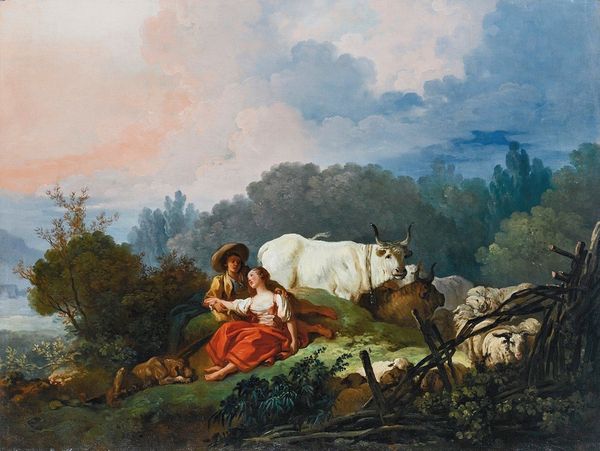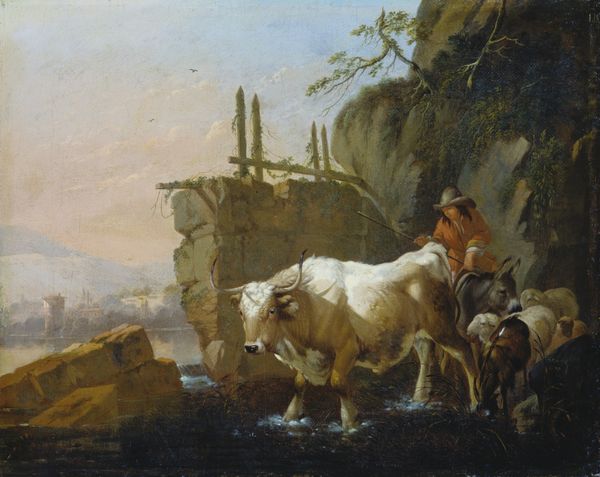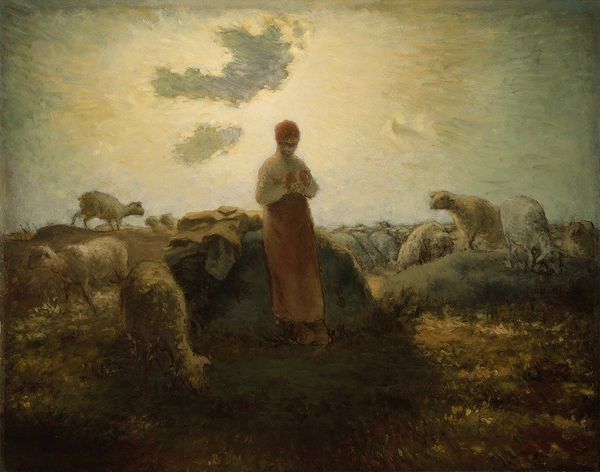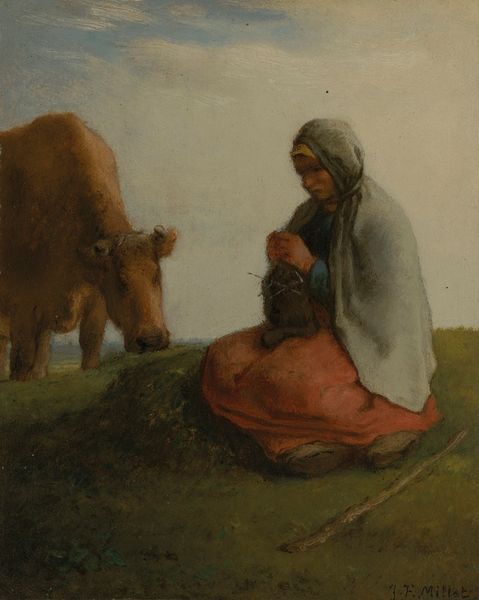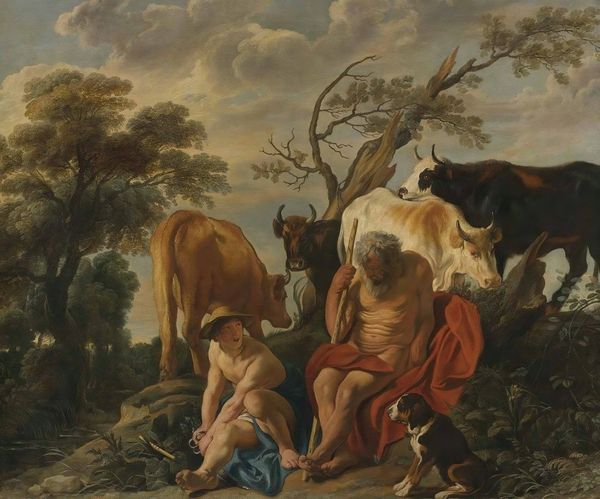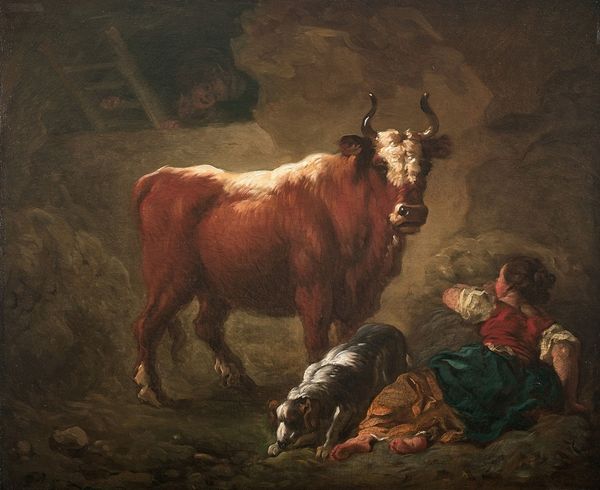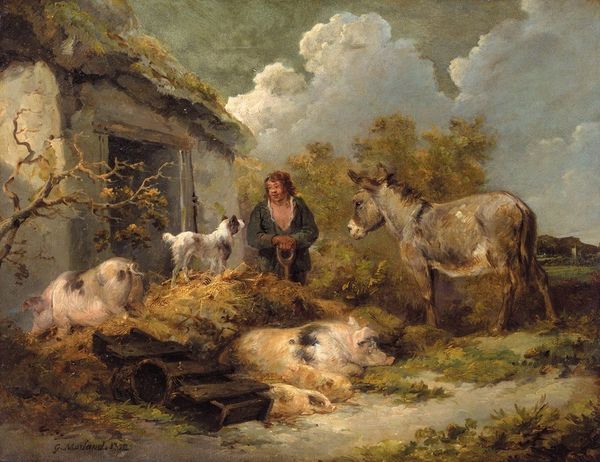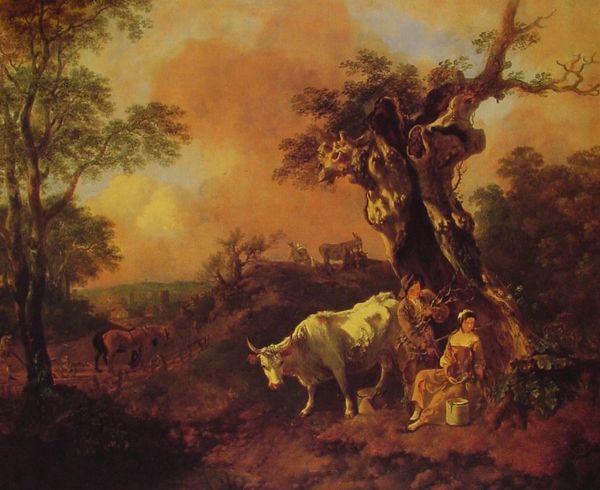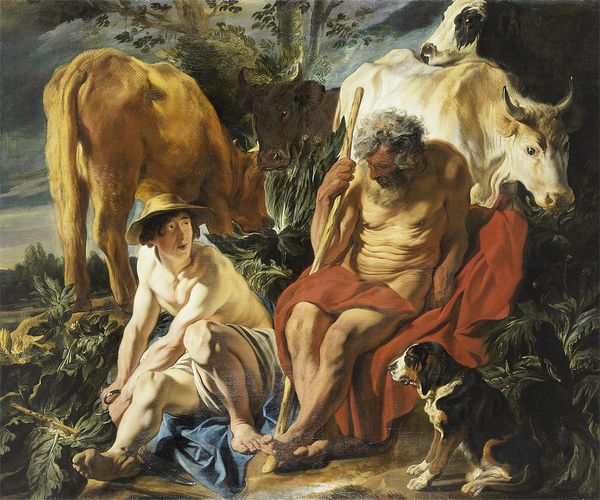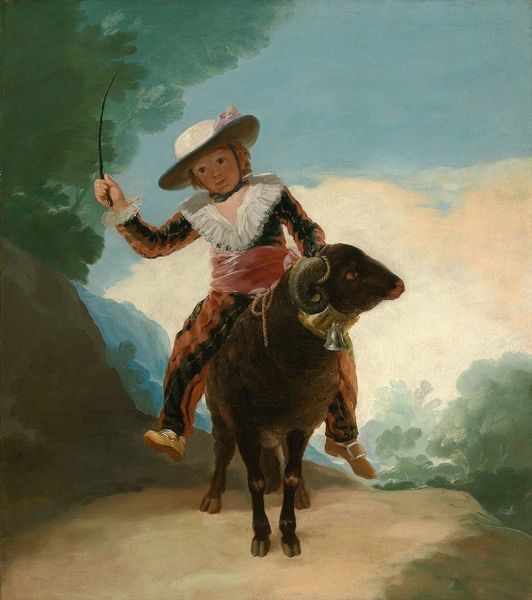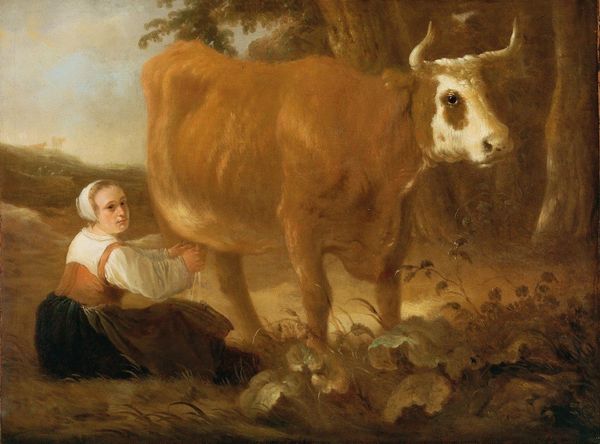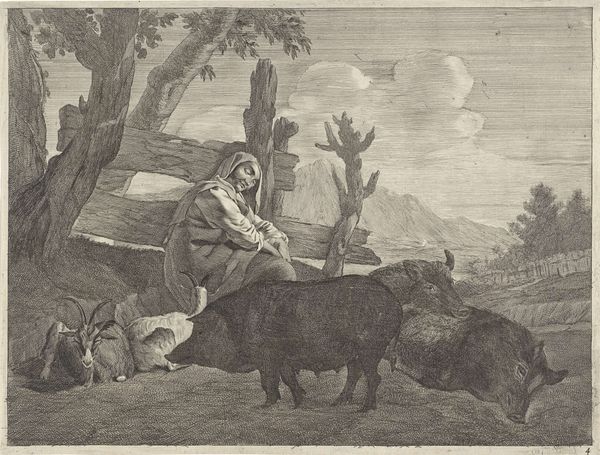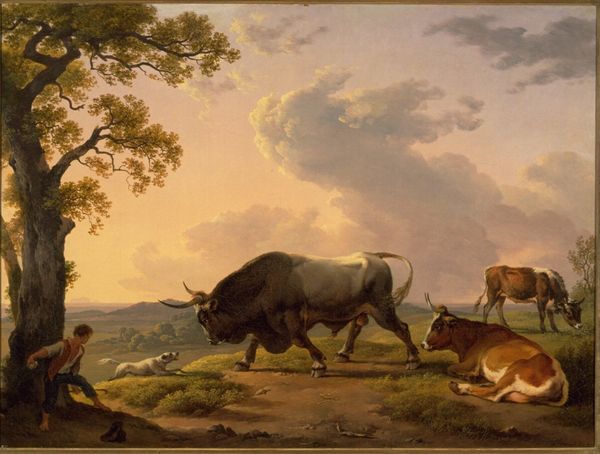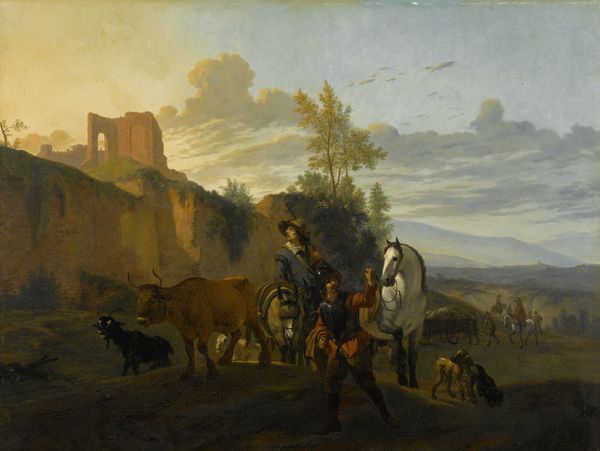
painting, oil-paint
#
narrative-art
#
baroque
#
painting
#
oil-paint
#
landscape
#
figuration
#
oil painting
#
genre-painting
#
history-painting
#
italian-renaissance
#
portrait art
Copyright: Public domain
Curator: What strikes me immediately is the vulnerability in this portrayal. He’s kneeling, gazing upward, surrounded by livestock – a picture of utter desperation. Editor: And quite a different picture from how we often view depictions of biblical parables. This piece is by Salvator Rosa, entitled "The Prodigal Son," rendered in oil on canvas around 1655. It's currently held at the Hermitage Museum. What insights does Rosa's landscape provide for us, beyond simple narrative? Curator: It situates him quite literally at the margins. Rosa, known for his wild landscapes and dramatic narratives, presents the Prodigal Son not in a lavish court, but in a desolate pastoral setting. It critiques the very notion of the ‘hero’ – what happens when the narrative turns grim, and the shiny indulgence is over? He is alone, stripped bare of any pretense of status. Editor: Exactly, the landscape isn’t just a backdrop, it’s integral. It underscores the socio-economic dimensions often obscured by religious interpretation. The pigs and cattle become reflections of his degraded status – mirroring, even, the perceived "impurity" attributed to certain laborers, certain castes. His journey isn’t just spiritual, it is socio-political, deeply enmeshed with economic exploitation. The landscape embodies all of this degradation. Curator: I think the placement of the figures within the frame reinforces that idea. Note the contrast between the vast, somewhat indistinct sky and the confined foreground. His plea seems almost swallowed by the enormity of the landscape itself. And that muted palette really adds to the somber, almost penitent, mood. Editor: The scale is interesting too. The livestock almost dwarf the figure. I read that as speaking to broader societal structures and their power to crush the individual. A fascinating inversion when considered within the typical celebratory readings of "repentance and forgiveness". Rosa pushes the viewer to consider what such repentance actually *means* when material precarity remains unchanged. Curator: Indeed, it challenges the established hierarchies. The "prodigal" returns, but to what exactly? An altered landscape perhaps – and within that – the eternal tension between man and environment and that relationship’s intrinsic reliance upon established systems of faith, societal governance and land management. Editor: Ultimately, the painting demands we re-evaluate familiar moral narratives within critical frames that underscore class, labor, and, quite simply, human survival against relentless material odds. Thank you.
Comments
No comments
Be the first to comment and join the conversation on the ultimate creative platform.
